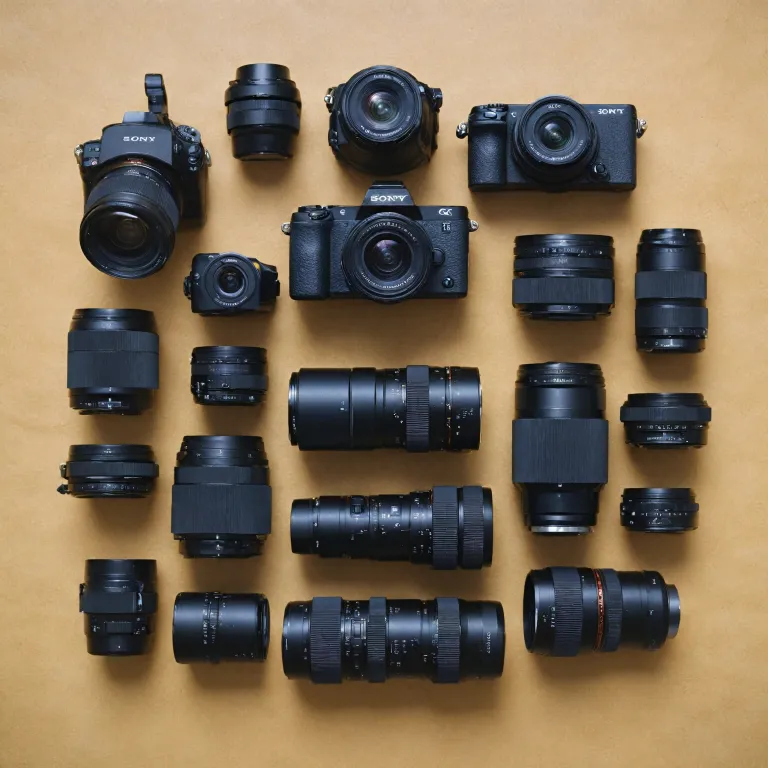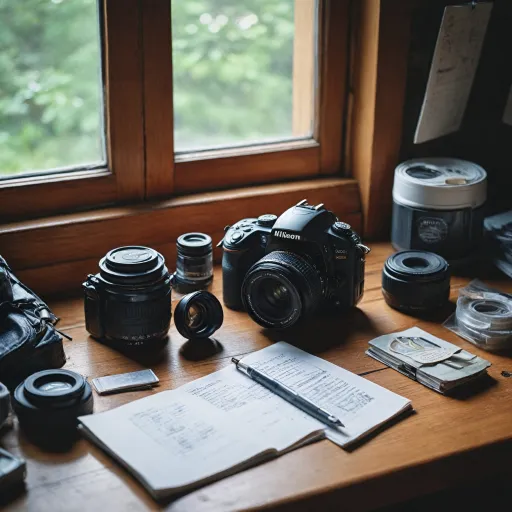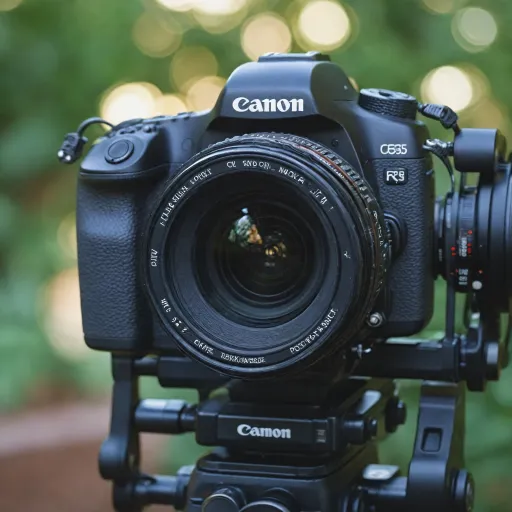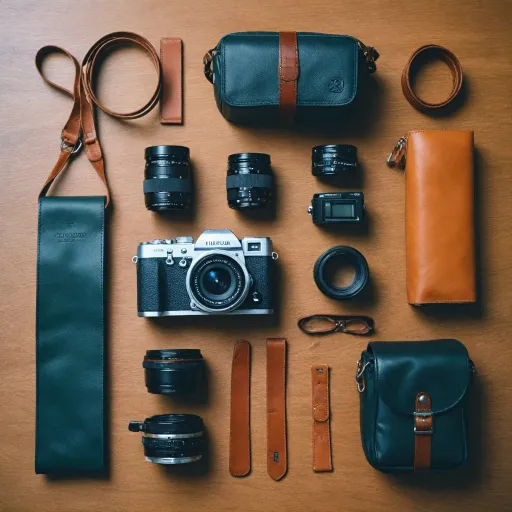
What makes the sony nex 5 5n stand out
Why Enthusiasts Notice the Sony NEX 5 and 5N
The Sony NEX 5 and 5N have earned a reputation among digital camera fans for their blend of compact design and powerful features. As mirrorless interchangeable lens cameras, they offer a unique balance between portability and image quality, making them a practical choice for those who want more than a basic point-and-shoot but aren’t ready to carry a bulky DSLR. The slim camera body, combined with the flexibility of the Sony E-mount system, allows users to experiment with a wide range of lenses, from the standard kit lens to specialized optics.
Compact Power in a Mirrorless Body
What sets the NEX 5 and 5N apart is their ability to deliver DSLR-like performance in a much smaller package. The APS-C sensor inside these cameras is the same size found in many larger digital cameras, which means you get impressive image quality and low-light performance without the extra weight. This makes the NEX series a favorite for travel, street, and everyday photography.
- Interchangeable lens system: The Sony mount supports a growing selection of lenses, including options from Sony and third-party brands. This flexibility appeals to both beginners and advanced users looking to expand their creative possibilities.
- Modern features: Touchscreen controls (on the 5N), fast autofocus, and HD video recording are all packed into the slim black body, making these cameras versatile for both stills and video.
- Build quality: The metal camera body feels solid and premium, a step above many entry-level digital cameras.
Innovation That Inspires
One of the most compelling aspects of the NEX 5 and 5N is how Sony has pushed innovation in the mirrorless camera market. Features like fast hybrid autofocus and compatibility with a wide range of mount lenses have influenced the direction of the entire Sony Alpha line. If you’re interested in how Sony continues to innovate, especially with features like animal eye autofocus, you might find this exploration of Sony’s innovative camera technology insightful.
In the following sections, we’ll look closer at how the NEX 5 and 5N perform in real-world shooting, their lens compatibility, and how they compare to other digital cameras from brands like Canon and Nikon.
Image quality and sensor performance
APS-C Sensor: The Heart of Image Quality
The sony nex 5 and 5n both feature an APS-C sized sensor, which is the same type found in many higher-end digital cameras. This sensor size is a key factor in delivering detailed images with good dynamic range, especially when compared to smaller sensors in compact cameras. The larger sensor allows more light to hit each pixel, resulting in better low-light performance and less noise at higher ISO settings. For photographers who want to step up from smartphone or point-and-shoot cameras, this is a significant upgrade.
Resolution and Real-World Performance
The nex 5 offers a 14.2-megapixel sensor, while the 5n bumps it up to 16.1 megapixels. While the difference in megapixels may seem small, the 5n’s sensor provides a slight edge in sharpness and detail, especially when cropping images or making larger prints. Both cameras produce images that are crisp and vibrant, with accurate color reproduction. In reviews, users often praise the sony alpha nex series for its ability to capture clear photos even in challenging lighting conditions.
RAW and JPEG Flexibility
Both the sony nex 5 and 5n support shooting in RAW and JPEG formats. Shooting in RAW gives photographers more flexibility in post-processing, allowing adjustments to exposure, white balance, and color without degrading image quality. This is a feature often found in more advanced mirrorless cameras, making the nex digital camera line appealing for those who want to learn and grow in photography.
Video Capabilities
Beyond still photography, these cameras also offer full HD video recording. The 5n, in particular, provides smoother video with its improved sensor and processing power. This makes the sony nex 5n a versatile choice for those interested in both photography and videography, without needing a separate camera body for each purpose.
How Does It Stack Up?
When compared to other mirrorless interchangeable lens cameras in its class, the sony nex series stands out for its balance of image quality, compact size, and ease of use. While some newer models like the sony alpha iii or cameras from canon and nikon offer higher resolutions or advanced autofocus, the nex 5 and 5n remain competitive for enthusiasts looking for a reliable, affordable entry into the world of digital cameras.
If you’re considering a used or pre-owned model, you might find additional insights in this review of buying a pre-owned sony a6000, which shares relevant experiences for anyone exploring the alpha nex lineup.
Lens compatibility and options
Flexible Lens Choices with the Sony NEX Series
One of the most attractive features of the Sony NEX 5 and 5N digital cameras is their compatibility with a wide range of lenses. These mirrorless cameras use the Sony E-mount system, which opens up a world of creative possibilities for photographers. Whether you are just starting out or looking to expand your kit, the NEX series offers flexibility that rivals many other digital cameras in its class.
- Interchangeable Lens System: The NEX digital camera body is designed to work with Sony E-mount lenses, including both prime and zoom options. This means you can easily switch between a compact kit lens for everyday shooting and a specialized lens for portraits or landscapes.
- Third-Party Lens Support: Thanks to the popularity of the Sony mount, there are numerous third-party lenses available from brands like Sigma and Tamron. This gives you access to a wider selection of camera lenses at various price points.
- Legacy Lens Adaptability: With the right adapter, you can mount lenses from other systems, such as Canon or Nikon, onto your Sony NEX camera. This is especially appealing for photographers who already own a collection of lenses or want to experiment with vintage glass.
- APS-C Sensor Compatibility: The NEX 5 and 5N feature an APS-C sensor, which means E-mount lenses designed for this sensor size will deliver optimal performance. However, you can also use full-frame Sony Alpha lenses, though with a crop factor applied.
Choosing the Best Lens for Your Needs
When selecting a lens for your Sony NEX camera, consider what you plan to shoot most often. The standard 18-55mm kit lens is a solid starting point for general photography, but there are many other options to explore. For example, wide-angle lenses are ideal for landscapes, while a fast prime lens can help you achieve beautiful background blur in portraits.
Photographers interested in instant prints or creative film effects might also enjoy exploring unique film options that complement digital workflows. While not directly compatible with the NEX series, these creative tools can inspire new approaches to photography.
| Lens Type | Recommended Use | Mount Compatibility |
|---|---|---|
| Kit Lens (18-55mm) | Everyday, travel | Sony E-mount |
| Prime Lens (e.g., 35mm f/1.8) | Portraits, low light | Sony E-mount |
| Wide-Angle Lens | Landscapes, architecture | Sony E-mount, adapted lenses |
| Telephoto Lens | Wildlife, sports | Sony E-mount, adapted lenses |
In summary, the Sony NEX 5 and 5N stand out for their lens flexibility, making them a strong choice for photographers who want to experiment and grow their skills. Whether you are using native Sony camera lenses or adapting mount lenses from other systems, the NEX series offers a robust platform for creative exploration.
Ease of use and handling
Comfort and Controls in Everyday Shooting
Handling the Sony NEX 5 and 5N is a key part of their appeal, especially for photographers moving from bulkier digital cameras or those new to mirrorless interchangeable lens systems. The compact camera body, combined with a lightweight kit lens, makes these models easy to carry for daily use or travel. The grip is well-contoured, offering a secure hold even during longer shooting sessions.
Intuitive Interface and Customization
One of the strengths of the NEX series is its user-friendly interface. The menu system is straightforward, with clear icons and logical navigation. For those who like to tweak settings, the customizable buttons allow quick access to frequently used functions. This is especially useful when switching between shooting modes or adjusting exposure on the fly.
- The tilting LCD screen is bright and responsive, making it easier to compose shots from creative angles.
- Touchscreen functionality on the NEX 5N adds another layer of convenience for focusing and menu navigation.
- Physical dials and buttons are minimal but thoughtfully placed, reducing accidental presses and keeping the design clean.
Portability and Everyday Practicality
Compared to many digital cameras, the Sony NEX 5 and 5N strike a balance between portability and performance. The slim black body fits easily into small bags, and the system is less intimidating for street or candid photography. Photographers who value discretion will appreciate how the camera doesn’t draw too much attention, unlike larger DSLR or full-frame alpha models.
Adaptability for Different Shooting Styles
Whether you’re using the standard kit lens or exploring other Sony mount lenses, the NEX series adapts well to different scenarios. The interchangeable lens system means you can switch from a wide-angle lens for landscapes to a prime lens for portraits without hassle. The camera’s quick startup time and responsive autofocus further enhance its usability for spontaneous moments.
In summary, the Sony NEX 5 and 5N offer a comfortable, intuitive shooting experience that appeals to both beginners and experienced photographers. Their design and handling make them standout choices in the mirrorless camera market, especially for those seeking a blend of performance and portability in a digital camera.
Connectivity and sharing features
Sharing Your Shots: Connectivity in the Sony NEX 5 and 5N
When considering a digital camera, especially a mirrorless camera like the Sony NEX 5 and 5N, how you transfer and share your images is a practical concern. These models, while not the newest in the Sony alpha lineup, offer a mix of classic and modern features for connectivity that suit both beginners and enthusiasts.
- USB and HDMI Ports: The camera body includes a USB port for direct file transfer to your computer. This is a straightforward way to move your high-quality APS-C images without needing extra accessories. The HDMI output lets you view your photos and videos on a larger screen, which is handy for quick reviews or sharing with friends and family.
- Memory Card Flexibility: Both the NEX 5 and 5N use SD cards, which are widely available and compatible with most digital cameras. Swapping cards between devices or using a card reader for fast transfers is simple and efficient.
- No Built-in Wi-Fi: Unlike some newer Sony alpha or Canon and Nikon mirrorless interchangeable lens cameras, the NEX 5 and 5N do not have built-in Wi-Fi or Bluetooth. This means you won’t be able to instantly send photos to your phone or social media directly from the camera. However, third-party SD cards with wireless capabilities can bridge this gap if instant sharing is a priority for you.
- Remote Control Options: While these cameras lack advanced wireless remote features found in later Sony models, you can use wired remotes for stable shooting, which is useful for long exposures or group shots.
In summary, the Sony NEX 5 and 5N may not offer the latest in wireless connectivity, but their reliable physical connections and compatibility with common accessories make them practical for photographers who value image quality and lens flexibility over instant sharing. If seamless wireless sharing is essential, you might want to explore newer digital cameras in the Sony alpha series or other brands like Canon and Nikon, which often include Wi-Fi and app support as standard features.
Comparing the sony nex 5 5n to similar cameras
How Does the Sony NEX 5 and 5N Compare to Other Mirrorless Cameras?
When looking at the Sony NEX 5 and 5N, it’s natural to wonder how these mirrorless cameras stack up against similar models from Sony and other brands like Canon and Nikon. Here’s a practical comparison to help you make an informed decision.- Sensor and Image Quality: The NEX 5 and 5N both use APS-C sensors, which are larger than those in many entry-level digital cameras. This means better low-light performance and more control over depth of field compared to compact cameras or some micro four thirds models. While newer Sony Alpha models and some Canon EOS M cameras offer higher resolution, the NEX series still delivers impressive image quality for its age.
- Body and Handling: The NEX 5N is slightly slimmer and lighter than many competing mirrorless camera bodies, making it a good choice for travel or street photography. Compared to the Nikon 1 series or Canon M series, the NEX cameras feel more robust and ergonomic, especially with the optional grip.
- Lens Mount and Compatibility: Sony’s E-mount system gives you access to a wide range of lenses, including SEL lenses and third-party options. While Canon and Nikon have their own mirrorless mounts, Sony’s lens ecosystem is generally broader, especially for those interested in experimenting with different focal lengths or adapting vintage lenses. The ability to use Alpha mount lenses with an adapter also adds flexibility.
- Features and Usability: The NEX 5N introduces a touchscreen, which is not always found in cameras from the same era. This makes menu navigation and focus point selection easier. However, newer mirrorless cameras from Sony and other brands now offer more advanced autofocus systems, higher resolution screens, and faster burst rates.
- Value and Availability: Since the NEX 5 and 5N are older models, they are often available at a lower price point, especially as a kit with the standard 18-55mm lens. This makes them attractive for beginners or those looking for a backup digital camera. Shipping and availability may vary, but the used market for Sony cameras is quite active.
| Camera | Sensor Size | Lens Mount | Touchscreen | Kit Lens Option |
|---|---|---|---|---|
| Sony NEX 5N | APS-C | Sony E-mount | Yes | 18-55mm SEL |
| Canon EOS M | APS-C | Canon EF-M | Yes | 18-55mm |
| Nikon 1 J5 | 1-inch | Nikon 1 | Yes | 10-30mm |
| Sony Alpha a6000 | APS-C | Sony E-mount | No | 16-50mm |
In summary, the Sony NEX 5 and 5N hold their own against other mirrorless interchangeable lens cameras, especially when considering their sensor size, lens compatibility, and compact body. For those entering the world of digital cameras or seeking a reliable backup, these models remain a solid choice in the ever-evolving mirrorless camera landscape.












